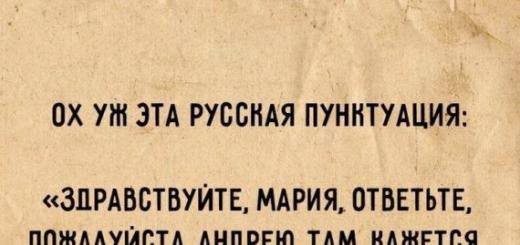Your baby has learned letters, actively adds syllables and small words. It's time to move on to more complex, but interesting tasks - reading texts. But here parents and teachers expect some difficulties. It is impossible to offer a preschooler text cards without taking into account the characteristics of age, the degree of development of the skill of syllable reading. We will tell you in our article how to choose texts for reading for preschoolers, where to find and how to correctly print texts for reading by syllables for younger and older preschoolers.
Age features of preschoolers
Kindergarteners after 5 years are very active, mobile, inquisitive. They rapidly grow up, grow wiser, develop physically and mentally.
When preparing for school, parents, teachers should pay attention to the following age characteristics of kids 4-7 years old:
- The main need of kindergarteners is communication, games. Children ask a lot of questions to adults, themselves, peers. Learn by playing.
- The leading mental function is imagination, fantasy. This helps to show creativity.
- Emotions, impressions, positive experiences are important for further development, the desire to continue activities. Kindergartener 5-7 years old needs praise, support, lack of comparison with other children.
- Cognitive processes are actively developing: attention, memory. At 5-7 years old, preschoolers can remember and analyze a large amount of information. But you need to give it in doses, trying not to overload the children's brain in one lesson.
- Speech becomes more developed. At the age of 5, the kid speaks in complex sentences, can pick up several synonyms for one word, knows a lot of poems, riddles, and several fairy tales by heart.
- Kindergartener wants to learn new things and learn. The kid is spurred on by curiosity, he is interested in everything new, unknown.
Consider the age and individual characteristics of preschoolers when choosing texts for reading. In this case, the training sessions will be more effective.
How to work with texts
Reading poems, short stories for a preschooler is a new kind of work. The difficulty of completing the reading task lies in the fact that the kindergartener does not always understand the meaning of the passage. To avoid this, you need to approach the choice of material and methods of its processing correctly. Build the learning process as follows:
- Select handouts according to the age of the student. For kids 4-5 years old, cards of 1-3 sentences, for older preschoolers - 4-5 sentences.
- Pay attention to the number of words in the sentences. There should be few of them. Simple texts for reading for preschoolers are easier to digest, but you can’t stay at an easy level for a long time.
- Move on to working with text cards after automating syllabic reading.
- Read in a chain in a group or together with adults in individual work.
- Don't rush your child. At the learning stage, reading comprehension is important, not the speed of reading and the amount of time spent.








Texts for children 4-5 years old
Young preschoolers need special suggestion cards. Reading by syllables for children under 5 years old is best accompanied by text with pictures. For example, coloring pages with comments. Coloring will be an additional task.
If for the first time we read by syllables, the texts for reading should consist of 1-2 sentences. Use small words, 1-2 syllables. Cards can be prepared independently, found on the web and printed.
For young students, it is important that there is a hyphen or other separator between syllables. Choose a font for printing material for reading by syllables at 4 years old, large, bold.
- Learning to read by syllables through working with text does not have to begin after learning the entire alphabet. Find for reading to children from 5 years old and print out individual sentences from such words, which consist of learned letters. There are many of them in the Zhukova alphabet.
- At the age of 4 to 5 years, it is not necessary to offer children a whole fairy tale, a book. Large volumes scare kids, distract with colorful drawings on other pages. Print only the section you want.
- Play with a passage, a poem. You can read a word separately, then a phrase, then a whole syntactic unit.
- Work according to the following algorithm. First we read, then we discuss, draw, fantasize.





Tasks
After reading the texts, be sure to study the material additionally. This is necessary for a solid assimilation of information, the formation of meaningful reading skills. Offer preschoolers the following types of assignments for the passage:
- Short retelling.
The kindergartener should tell what he learned, what information was the main thing in the text. It is advisable to use the words read, to name the names of the characters, their actions. - Answer the questions.
Speech therapist, parent ask 1-3 simple questions about the material read.
If the baby does not answer them, you need to read the passage together, with the adult's comments. - Draw a picture.
We play illustrators. Children come up with a plot picture based on the information received from the passage, the poem. It could be homework. - What happened next?
Offer to dream up, think of what could happen to the characters next.
Reading texts with pictures and tasks:
















Texts for children 6-7 years old
If you are preparing reading texts for children 6-7 years old, then you can print out entire paragraphs. For work, choose excerpts from fairy tales, short stories. With large works, you can work 2-3 lessons. Do not forget about short stories from the alphabet or primer.
- Work through the sentences in a chain, try to involve each student.
- After reading the short passage for the first time, discuss the content. If you find any misunderstandings of the information, read the passage again.
- If we read individually by syllables, different texts for reading to children of 7 years old should be printed on separate sheets.
Texts with tails:










Learning to read in syllables - this stage in teaching children to read is one of the most important and difficult. Often parents simply do not know how to teach a child to pronounce two letters together and get stuck on it for a long time. Tired of the endless repetition of "ME and A will be MA", the child quickly loses interest, and learning to read turns into torment for the whole family. As a result, children who already know letters from the age of two or three cannot even read simple words by the age of five, not to mention reading sentences and books.
What to do next when the child has memorized the letters? Let's make a reservation right away that teaching a preschooler to read syllables can be started even BEFORE he has mastered the entire alphabet (moreover, some teachers insist that you need to move on to syllables as quickly as possible, without waiting for all the letters to be studied). But those letters that we will combine into syllables, the child must name without hesitation.
In order to start learning to read by syllables, it is enough for a child to know 3-4 vowels and a few consonants. First of all, take those consonants that can be pulled (S, Z, L, M, N, V, F), this will help teach the child the continuous pronunciation of the syllable. And this is a fundamentally important point.
So, let's consider a few, in our opinion, the most effective methods that modern teachers offer for teaching a child to fold letters into syllables.
1. We play "Engines"
(a game from the manual by E. Baranova, O. Razumovskaya "How to teach your child to read").
Instead of boring cramming, invite your child to "ride the train." All consonants are written on the rails along which our trailers will go, and vowels are written on the trailers themselves. We place the trailer on the rails so that a consonant appears in the window, and we name which station we got (for example, BA). Next, we move the trailer down the rails - to the next consonant and read the syllable that appears.
There is a similar guide in cards "Game" Steam locomotive. We read syllables. from E. Sataeva
This game is good because the child does not need to be specially explained how to add syllables. It is enough to say: “Now we will ride the letter A, she will be our passenger, name all the stations at which we will make a stop.” To begin with, “ride” yourself - let the child move the trailer along the rails, and you loudly and clearly call the “stations”: BA, VA, GA, YES, ZHA, ZA, etc. Then invite your child to take turns doing this with you. During the game, listening to you, children easily grasp how to pronounce two sounds together. For the third time, the child will “ride” himself without much difficulty.
If the child does not know all the letters, stop only at those “stations” that are familiar to him. Next, we change the wagon. Now we roll the letters O, U, S. If the child can easily cope with the task, we complicate the task. For example, we ride at speed - timing which of the wagons will reach the end of the path first. Or another option: stopping at the station, the child must name not only the syllable, but also the words starting with this syllable (BO - barrel, side, Borya; VO - wolf, air, eight; GO - city, golfs, guests; DO - rain, daughter, boards, etc.).
Please note that with this game you can practice reading not only open syllables (with a vowel at the end), but also closed ones (with a consonant at the end).
To do this, we take trailers where the vowels are written in front of the window, and act in the same way. Now we have a letter on the trailer not a passenger, but a driver, she is the main one, she is in front. First read the resulting “stations” with closed syllables yourself: AB, AB, AG, AD, AZH, AZ, etc., then offer the child a “ride”.
Remember that in this and other exercises, we first practice adding syllables with first-row vowels (A, O, E, Y, Y), and then we introduce second-row vowels (I, E, E, Yu, I) - the so-called "iotized" vowels, which make the sound that precedes them soft.
When the child is good at reading individual tracks with syllables, alternate trailers with passengers and drivers, without prompting which trailer we will ride. This will help the child learn to clearly see exactly where the vowel is in the syllable (the syllable begins with it or ends with it). At first, learning to read by syllables in a child may have difficulties with this.
2. "Run" from one letter to another
(from "ABC for kids" by O. Zhukova)This is a visual exercise that will help the child learn to pronounce two letters together.

Before us is a path from one letter to another. To overcome it, you need to pull the first letter until the finger that we are leading along the path reaches the second letter. The main thing we are working on in this exercise is that there is no pause between the first and second sound. In order to make it more interesting to study, replace your finger with a figure of any animal / little man - let him run along the path and connect two letters.
("ABC book for kids" by E. Bakhtina, "Russian alphabet" by O. Zhukova and others).
 Many authors of primers and alphabets use animated images of letters that need to be folded into a syllable - they are friends, walk together in pairs, pull each other through obstacles. The main thing in such tasks, as in the previous exercise, is to name two letters together so that the two girlfriend letters stay together.
Many authors of primers and alphabets use animated images of letters that need to be folded into a syllable - they are friends, walk together in pairs, pull each other through obstacles. The main thing in such tasks, as in the previous exercise, is to name two letters together so that the two girlfriend letters stay together.

To use this technique, you do not even need special manuals or primers. Print out several figures of boys and girls (animals, fairy-tale or fictional characters), write a letter on each of them. Let consonants be written on the figures of boys, and vowels on the figures of girls. Make friends with the kids. Check with your child that boys and girls or two girls can be friends, but it is not possible to make friends with two boys (pronounce two consonants together). Change pairs, put girls first in them, and then boys.

Read the syllables first in one order, then in reverse.
These few tricks are quite enough to teach a child to put two letters into a syllable. And learning in the form of a game will allow you to avoid cramming and boring repetition of the same thing.
4. Games to consolidate the skill of adding letters
- Syllabic Lotto
It is very easy to make them yourself, for this you need to pick up a few pictures - 6 for each card and print the corresponding syllables.

- Help will help you “Syllables. Choose a picture according to the first syllable BA-, VA-, MA-, SA-, TA-. Educational lotto games. GEF DO "E. V. Vasilyeva- there are a few more tutorials in this series “Letters, syllables and words. Lotto with verification” by A. Anikushena
- Similar exercises are in the book. "Syllabic tables. GEF "N. Neshchaeva
- Shop game
Lay out toy goods or pictures with their images on the counter (for example, FISH-ba, DY-nya, PI-horns, BU-lka, YaB-loki, MYA-so). Prepare "money" - pieces of paper with the name of the first syllables of these words. A child can buy goods only for those “bills” on which the correct syllable is written.
Make an album with your child’s own hands, in which a syllable will be written on one page of the spread, and objects whose name begins with this syllable will be written on the other. Periodically review and supplement these albums. For more effective learning to read, close one or the other half of the spread (so that the child does not have extra clues when naming a syllable or choosing words for a particular syllable).

This will help you "Cards for sound and syllabic analysis of words."
- Game in the airfield (garages)
We write syllables large on sheets of paper, lay them out around the room. These will be different airfields (garages) in our game. The child takes a toy plane (car), and the adult commands - on which airfield (in which garage) you need to land the plane (park the car).
For this exercise, Zaitsev cubes or any cards with syllables are suitable (you can make them in the form of traces). We build a long path from them - from one end of the room to the other. Choose two figurines / toys. You play one, the child plays the other. Roll the dice - take turns with your figures on the cards for as many moves as fell on the dice. Stepping on each card, name the syllable written on it.
For this game, you can also use various "walkers" by writing syllables in circles on the playing field.

5. Reading simple words by syllables
Simultaneously with the development of syllables, we begin to read simple words (of three or four letters). For clarity, so that the child understands what parts the word consists of, which letters should be read together and which separately, we recommend that the first words be composed of cards with syllables / individual letters or graphically divide the word into parts.

Words of two syllables can be written on pictures consisting of two parts. Pictures are easier to understand (the child is more willing to read the words written on them than just columns of words), plus it is clearly visible into which parts a word can be broken down when reading it syllable by syllable.

Increase the difficulty gradually: start with words consisting of one syllable (UM, OH, EM, UZH, Hedgehog) or two identical syllables: MOM, UNCLE, DAD, NANNYA. Then proceed to reading the words of three letters (closed syllable + consonant): BAL, SON, LAK, BOK, HOUSE.
You need to understand that even if a child pronounces all the syllables in a word correctly, this does not mean that he will immediately be able to meaningfully put them into a word. Be patient. If a child has difficulty reading words of 3-4 letters, do not proceed to reading longer words and especially sentences.
Be prepared for the fact that the child will freely begin to read words only after he has automated the skill of adding letters into syllables. Until this happens, periodically return to working out syllables.
And, most importantly, remember that any learning should be a joy - for both parents and children!
Philologist, teacher of Russian language and literature, teacher of preschool education
Svetlana Zyryanova
My children learned to read letters early, and then they scribbled great by syllables. And friends asked me to tell them how to teach a child to read. The fact is that they began to teach the child to immediately read the letters as they are pronounced in the alphabet, that is, “M” is the letter “Em”, “B” is the letter “Be”, etc. Oh, why did they start so wrong? “It just ruined everything,” I said.
Therefore, in this material I will give my method, which, however, is well known, how to quickly and correctly teach a child to read, so that he can already freely read any children's book for preschool children by school.
Here are the main points that will be discussed in this article:
- Choosing the best teaching method
- Learn vowels and consonants
- Repeat and repeat again
- Begin to read in syllables
- Read simple syllables
- Moving on to complex syllables
- Start reading words
- Monitor pronunciation
- Do not forget about age
- Learn by playing
So here are the basic rules:
1) First
Advice on the choice of methodology and benefits.
It will be best if you buy a primer authored by N.S. Zhukova
This manual very effectively helps the child understand how to begin to compose letters into syllables, read syllable by syllable, and then already in whole sentences. There are not too many pictures in it, but there are enough of them so that your child does not get bored.
Be sure to buy this primer, it is sold in any bookstore with educational literature (or you can download it online if you can find it). I taught my children exactly according to this method, having looked through a bunch of others before and settled on this one.
2) Second
How to learn vowels and consonants correctly.
First, we learn open vowels, solid: A, O, U, Y, E.
Then we learn solid voiced consonants: M, L.
Important: you need to pronounce consonants only with sounds, that is, not Me, not Em, but simply “M” and that’s it.
Then we learn deaf and hissing sounds: Zh, Sh, K, D, T, etc.
3) Third
Repetition is the mother of learning.
Be sure to repeat the material covered in each lesson, that is, the sounds that we learned in the previous lesson. Consolidation of the material will allow you to quickly develop the correct reading mechanism for the child.
4) Fourth.
We read in syllables.
But now, when we have already learned some of the sounds, we need to teach the child to read in syllables. It's actually not as difficult as it seems.
Let's analyze the syllable "Ma".
Look in the primer how the first letter of the syllable - "M" - runs to the second letter - "a". This is how a child should be taught to read in syllables: “m-m-m-ma-a-a-a-a” - “m-m-m-ma-a-a-a-a”. The child must understand that the first letter runs to the second, and as a result, both are pronounced together, together, inseparably from each other.
5) Fifth.
Learn simple syllables.
The first syllables that you should teach your child to read should be simple, consisting of two sounds, for example, MA, LA, PA, LO, PO.
The child must understand how sounds are composed into syllables, he must understand the algorithm for this reading by syllables. Then, after a couple of days, he will begin to read more complex syllables like a knurled one: ZhU, VE, DO, that is, with hissing and deaf consonants.
6) Sixth.
Learn more complex syllables.
It is still too early to move on to reading books, that is, to reading words. It is better to reinforce reading by syllables for a longer time, so that the child thoroughly understands the mechanism for compiling syllables, and from them - already words.
So, after the child has already begun to read in syllables consisting of two letters, start giving him more complex syllables in which the vowel comes before the consonant: AB, OM, US, EH.
8) Eighth
We follow the pronunciation.
To teach your child to read well, be sure to follow the first pronunciation of syllables.
Attention: some parents and even teachers and educators in kindergartens make children sing syllables. Children get used to this and begin to sing them constantly, without even making spaces between words. That is, “ma-ma-we-la-ra-mu” is sung by such children in one breath. And some children even manage to sing the entire text of the entire paragraph without pausing even when there are periods, commas or exclamation (question) marks.
Therefore: if you teach a child to read, teach well right away - do not allow the child to sing everything, be sure to make him pause between words and even more so between sentences. Immediately teach the child this way: sang the word, pause, sang the second, pause. Then he will shorten the pauses himself, but to start, pauses must be made.
9) Ninth
At what age should a child be taught to read?
Don't rush things. If your child is 3 or 4 years old, he is not at all willing to sit and scribble over books, read fluently or make letters into syllables. At this age, it is still too early to start teaching a child to read, unless, of course, he himself expresses his strong desire to learn to read and write.
Another thing is that at 5 and even at 6 years old - at this age, in fact, the preparatory age for school, children must be taught to read and write basic phrases in block letters. Type "MAMA", "COW", "MILK". Usually, teachers in kindergartens cope with this. But those children who do not go to kindergarten for one reason or another must definitely receive this knowledge at home from their parents, or grandparents, or from a tutor. The fact is that the modern curriculum in secondary school already implies that the child comes to the first grade already able to read in syllables.
Therefore, if you teach him before school, then at school it will be very easy for him to read, and he will survive the first stress from school calmly.
10) Tenth.
We learn by playing.
Do not try to immediately teach your child to read fluently, or expressively. First of all, he must learn to compose syllables on his own, read them in a book, compose words and sentences, that is, simply master the technique of reading. Let it be very slow at first, let it be difficult for him. But you must smoothly, quietly and calmly correct his mistakes, as if playfully. After all, the game is always relaxation, the absence of stress. Namely, this is what is needed for the child to calmly understand everything that adults require of him.
And the last. If you follow all these 10 tips and rules, you will teach your child to read quite quickly - in 1.5-2 months. They learned this from me already at the age of 5 during the summer holidays, when the kindergarten was closed.
And in the first grade, they already read quite fluently. And by the way, most of the kids in first grade already knew how to read and count to ten, so my kids didn't have to catch up.
A year or two before school, we think about teaching our child to read. After all, we know that the sooner our preschooler learns to read, the more useful information he can get even before he becomes a first-grader. Once your child learns, you can move on to learning syllables. It is these syllables for reading that can be downloaded from this page.
Syllable cards are the key to reading. Download, print and cut the sheet into cards, on which there will be bundles of syllables consisting of a vowel and a consonant. In just a few weeks, after the child learns to read each syllable, he will be able to make out whole words in children's books.
Syllables by letter: download or print immediately
Syllables starting with "B"
|
Syllables starting with "B"
|
Syllables starting with "G"
|
Do not load the child with reading all the syllables at once. For example, during the week, teach your child syllables that begin with the same beech.
Syllables starting with "D"
|
Syllables starting with "Zh"
|
Syllables starting with "Z"
|
For the second week, study the syllables that begin with a different letter, and the learned syllables, just repeat.
Syllables starting with "K"
|
Syllables starting with "L"
|
Syllables starting with "M"
|
There is an opinion that letters of different colors, in syllables for reading, only distract the child, and do not contribute to rapid learning.
Syllables starting with "N"
|
Syllables starting with "P"
|
Syllables starting with "R"
|
If you want to resolve cards with syllables quickly, then use a ruler and a wallpaper knife.
Syllables starting with "C"
|
Syllables starting with "T"
|
Syllables starting with "X"
|
To make the cards last for a long time, and not just one child, laminate them.
Syllables starting with "F"
|
Syllables starting with "C"
|
Syllables starting with "Ch"
|
After the preschooler learns to read all the cards with syllables correctly, you can move on to reading books in which the words are broken into syllables.
Syllables starting with "Sh"
|
Syllables starting with "Sh"
|
"Ayfolika" is an effective and exciting reading course for preschool children. It is based on a patented way of learning the letters of the Russian alphabet and reading words.
The course consists of separate applications, each of which is aimed at gradually teaching the child to read: pronunciation of sounds, memorizing letters, reading syllables, reading words and reading sentences.
The technique is suitable for both children who do not know the alphabet at all, and those kids who already have basic knowledge.
Today's children get acquainted early with smartphones and tablets. And of course, first of all, children play games on them. The Aifolika online reading course provides an excellent opportunity to take advantage of this to teach your child to read.
Classes at the Aifolika course develop fine motor skills, attention, memory, logical and abstract thinking, speech skills, as well as cognitive activity, independence and creativity of the child.
Why the primer "Aifolika"?
In order to learn to read, so that the child's mind performs complex mental operations: comparison, analysis and synthesis, abstraction, generalization and concretization. Performing game exercises with our online primer, the child uses all these types of mental operations. The exercises in Aifolik are based on a combination of logic and association, which activates the work of both hemispheres of the baby's brain. On this psychological basis, the methodology of the Aifolika course was built.
When developing the course, the main pedagogical principles were observed: consistency, accessibility, visibility, adequacy.
The methods of teaching reading are based on the principle “from sound to letter”, starting with a phonetic block and ending with reading exercises.
The study of each letter of the alphabet consists of 18 extended stages with game exercises aimed at the correct pronunciation of the sound, memorization and reproduction of the visual image of the letter, correlation of the sound with the graphic image of the corresponding letter, finding this letter among others, composing and voicing syllables with the studied letter.
The course consists of a set of applications that include:
1. Learning letters and the sounds they represent. The speaker methodically pronounces the sounds correctly, then the child, on the instructions of the speaker, performs game exercises and repeats the sounds. The image on the screen helps the child to understand the articulation position of the lips and tongue. These are exercises such as pronouncing and singing sounds, finding various objects whose names begin with the sound being studied.
2. Remembering the graphic representation of letters. The child learns to memorize and reproduce the graphic representation of letters, perceive the sounds indicated by the letters by ear and pronounce these sounds. Using specific game examples, the child will learn to associate the graphic image of a letter with the corresponding sound; can, looking at pictures, pronounce words and determine by ear the place of a particular sound in a word; will develop phonemic hearing, speech skills and will pronounce sounds and form the corresponding letters - from "A" to "Z". By playing apps, your kid will learn to recognize letters by making them up from various objects, looking at pictures whose names begin with the letter they are learning, matching the same and different letters, and guessing interesting riddles.
3. Compilation and reading of syllables. In a playful way, the child learns to make open and closed syllables from already familiar (studied) letters and recognize these syllables in words. As you learn new letters of the alphabet, exercises in the online alphabet will become more difficult. Exercises for reading syllables are introduced already on the third studied letter.
4. Reading words. The child gradually begins to put syllables into words, moving from simple one-syllable and two-syllable words to constructions with different types of syllables. While playing, the child will learn to associate the sound of a word with its spelling. At the stage of learning to read words, the child will get acquainted with such applications as composing the word spoken by the announcer from the proposed syllables, reading words by syllables, composing words by the name of the drawn object.
5. Reading sentences. First, the child is asked to read simple sentences with words divided into syllables. Gradually, the tasks become more difficult, and punctuation marks are introduced. As a result, the child will learn to read simple texts consisting of several sentences.
The methods of teaching reading developed by us also contribute to the intellectual development of the child as a whole. The Aifolika course will be the first primer for your child, which will open the magical world of books to him.
The course was prepared by a team of practicing philologists and psychologists, specialists in preschool education.
The primer technique is patented as a useful invention in Rospatent.
The Aifolika course is suitable for children from 3 years old.






























